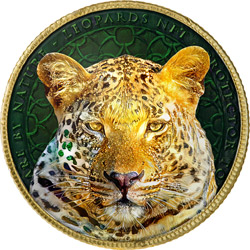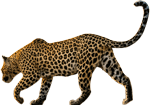One of the most exciting times to be in the bush is during the impala rut, in the months of May and June. For these few weeks of the year the impala males are in almost constant battle, fighting for mating rights to the females, and 24-7 almost all one can hear are their grunts, snorts and roars as they chase each other through the bush. Their energy levels are so sapped by the rutting, and their vigilance is so single-mindedly fixed on the females they are defending and the other males they are defending against, that many of them fall easy prey to the large predators in the area.
Rising testosterone levels in the males are brought on by a number of environmental cues, and over the next few weeks we will be seeing many of the males starting to spar, with each session bringing on more and more serious bouts until the rut is in full swing.
Bought on by the excitement everyone is feeling for the change of season, this week we decided to do something a little different and got a few of the blog contributors to pool their photographs together. The result is a wide range of what various rangers saw out in the bush this week. Enjoy our collaborative Week in Pictures…

Two male impala square off against each other in a clash of horns and dust. These two males are not quite full grown yet, and so are highly unlikely to be able to procure a harem this season.

Nyala bulls have a slightly different approach to impala rams, preferring the intimidation tactic. This bull was displaying for the benefit of another male, trying to look as big as possible in the hope that the other bull would back down, and in that way actual physical confrontation would be avoided. Photograph by Shaun D’Araujo

Two young spotted hyena cubs take an interest in their surroundings from the entrance of their den. Although hyenas will move dens fairly regularly to avoid parasite build-up, they have been firmly established at this one near the Maxabene River for some months now. Photograph by Kevin Power

A Southern white-faced owl, not often seen on Londolozi. These owls generally prefer more open scrub, and are therefore usually seen in the south west of the property, where more of this type of terrain is to be found. Photograph by Sean Cresswell

Another Southern white-faced owl picture, with the prominent ear tufts clearly visible this time. Although used as an aid to hearing, these tufts also help as camouflage mechanisms, breaking up the owl’s outline when it rests during the hours of daylight.

A young male lion from the Mhangeni pride keeps an eye on a distant herd of buffalo, hoping for an opportunity to rush in on the hunt. No such opportunity presented itself, and the pride settled down for the day. Photograph by Amy Attenborough

A female from the same pride also takes her turn eyeing out the distant herd. Photograph by Amy Attenborough

A large-spotted genet, seen fairly often after dark, but not often photographed. Photograph by Callum Gowar

This young African rock python was venturing up a broken Phragmites reed in the Sand River, but having nowhere to go it was forced to turn around and slither off into a thicket. Photograph by Callum Gower

One of the Tsalala cubs keeps a wary eye on the Dark Maned Matimba male as he walks by. Although these males are the fathers of the cubs, the females are still wary of the potential threat they could pose, and are often reluctant to let the cubs get too close. Photograph by Jacqui Marais

The Mashaba female heads down a game path through a Tamboti thicket while her cub sits behind her. Nyala alarm calls had alerted ranger Garrett Fitzpatrick and head tracker Richard Siwela to the presence of a predator in the area, and it wasn’t long before they had found the pair emerging from Winnis’ Donga. Photograph by James Tyrrell

The cub spied some vervet monkeys up in a Schotia tree and rushed up to chase them. Unfortunately the thick foliage prevented any photos from being taken, but this is the Mashaba female watching her daughter’s antics high in the branches. Photograph by James Tyrrell

The cub made four forays up the tree to try and catch the monkeys, who were alarming at the leopards the entire time. Between attempts she would return to her mother to be groomed, but would nevertheless keep her eyes fixedly on the monkeys. Photograph by James Tyrrell

A lot of wildlife photography is about the setting, and there are few better areas in Londolozi for big cat photography than the dry sands of the Manyelethi Riverbed. Photograph by Kevin Power

Although clouds can make for a slightly more sombre day, come evening they can contribute hugely to the colour in the sky. Photograph by Sean Cresswell

A lone wildebeest scans the clearings as night falls. These herbivores will generally pick an open spot to spend the night, where visibility is better and there is room to move if danger does come along. Photograph by Sean Cresswell

A cheetah, although a predator, must feel a similar angst to the wildebeest as the darkness descends. These cats do not have the same nocturnal vision as other big cats or hyenas, and will generally lie up during the night, getting active once more with the dawn. Photograph by Kevin Power
Photographed by Callum Gowar, Kevin Power, James Tyrrell, Amy Attenborough, Jacqui Marais and Shaun D’Araujo

























stunning low light photography …especially love the White Faced Scops owl shining out of the tree branch
We really loved this set of pics. Such variety and clarity. Particularly loved the close up of the Southern White Faced Owl. Thank you to all the photographers! It really is like going on safari every morning at Londolozi for the two of us as we so often have been on safari for many years but are now in our late 70’s and are pensioners so can’t go anymore. However – the Londolozi blog is our favourite time to re-live sightings that we have seen. Great. Keep it up, folk! Wendy and Neil
Fantastic images! I especially loved the close up of the Southern White-Faced owl, also a great shot of the Genet, and beautiful colour in Sean’s evening sky picture, but these are all really great images and a nice way to start the weekend!
Every picture tells its own story. They are all stunning. The Nyala brought back memories of when Ivan and I saw one displaying to another male. The display took three quarters of an hour until the other male moved off. It was like watching a ballet in slow motion, complete with shivers and shakes. It was really special to watch. Thank you so much for the beautiful pics.